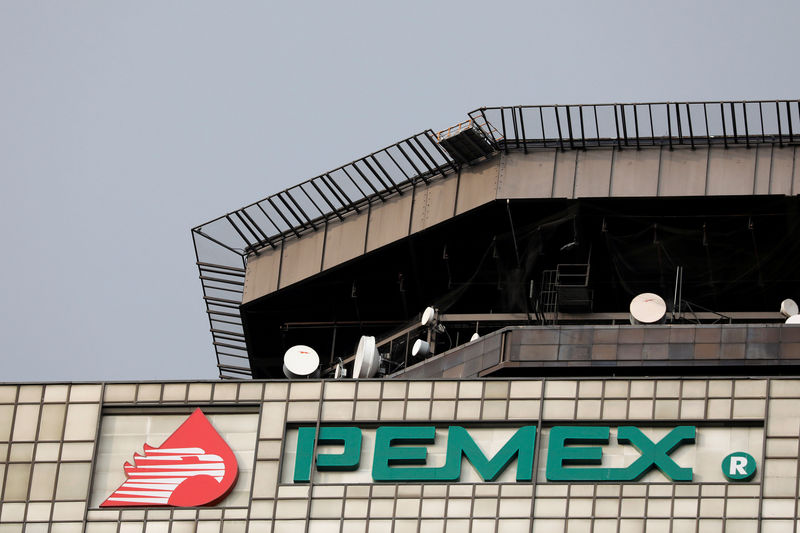 © Reuters. FILE PHOTO: The Pemex logo is seen at its headquarters in Mexico City, Mexico
© Reuters. FILE PHOTO: The Pemex logo is seen at its headquarters in Mexico City, MexicoBy Aaron Weinman
NEW YORK (LPC) – Mexican energy producer Petróleos Mexicanos (Pemex) will look to banks and export credit agencies (ECAs) to finance part of its deficit next year, as the company enters 2019 under a new government and uncertain conditions in the international capital markets.
State-owned Pemex, which is expected to raise approximately $8 billion in external debt next year, is also facing a bearish investor base concerned that Mexico’s new administration will hinder the company’s fiscal situation.
Pemex raised roughly $9.9 billion from international bond markets in 2018, placing all but $2 billion before Mexico’s presidential election in July. But as market conditions have waned globally and investor sentiment for Mexican risk has soured, Pemex may be forced to analyze less-frequent sources of funding, such as ECA-backed loans, in 2019.
President Andrés Manuel López Obrador (AMLO), who took office on December 1, is proposing to boost the indebted Pemex’s annual budget to 464.6 billion Mexican pesos ($23 billion) in 2019, a 14 percent year-on-year jump that serves to increase oil production and domestic fuel output, while reducing Mexico’s reliance on fuel imports.
AMLO’s emphasis on the less-profitable oil refining business is a shift away from former President Enrique Peña Nieto’s energy reform policy that emphasized foreign investment into Mexico’s oil and gas exploration and production sector.
“The focus looks to be on refining and the problem is that this is not a profitable part of Pemex’s business,” said an investment banker, adding that the company may need to conduct bank and investor meetings in order to quell market concerns.
While Pemex is poised to invest $8 billion into an oil refinery in the state of Tabasco, the company will also allocate capital expenditure toward onshore and shallow water drilling, but will apply less investment to costlier deepwater projects.
Exploration investment is predicted to increase 10 percent each year for the next six years, Pemex chief executive officer Octavio Romero said December 15 when he presented the 2019 budget alongside President López Obrador.
Pemex has a $1.5 billion bank-led revolving credit facility maturing in the second half of 2019 and is on course to raise between $1 billion and $1.5 billion in ECA-backed finance next year, according to three sources familiar with the company’s plans.
The company has conducted talks with trade agencies such as Export Development Canada and the Netherlands’ Atradius over ECA-backed loans and in November Pemex received a $250 million 10-year facility from BNP Paribas (PA:) and HSBC that was 80 percent guaranteed by Italian ECA Servizi Assicurativi del Commercio Estero (SACE), the sources said.
Despite the possibility of fresh bank and ECA-backed loans, Pemex still relies on international bond sales to finance the bulk of its annual deficit. At the end of September, Pemex tapped international bond markets for 75 percent of its 2018 requirements, while bank and ECA-backed facilities made up 13%, according to an investor presentation from Pemex.
Investment grade and state-owned, the capital markets typically look for Pemex or its Brazilian counterpart Petrobras to open the bond market for Latin American corporate issuers in January. But global equity market volatility has widened credit spreads across different asset classes and left bankers and investors braced for a slow January.
Pemex’s yield curve was quoted roughly 300bp wide of Mexico’s, and sources close to the company do not expect Pemex to issue new debt next month.
“Usually Pemex is between 100bp and 200bp back of the sovereign [Mexico],” a capital markets source in Mexico City said. “Markets have not been kind with Mexican corporate issuers.”
Source: Investing.com



























